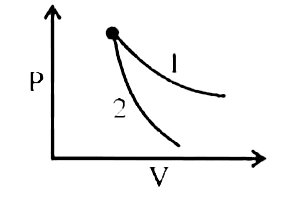P-V plot for two gases (assuming ideal) during adiabatic processes are given in the figure. Plot A and plot B should correspond respectively to :
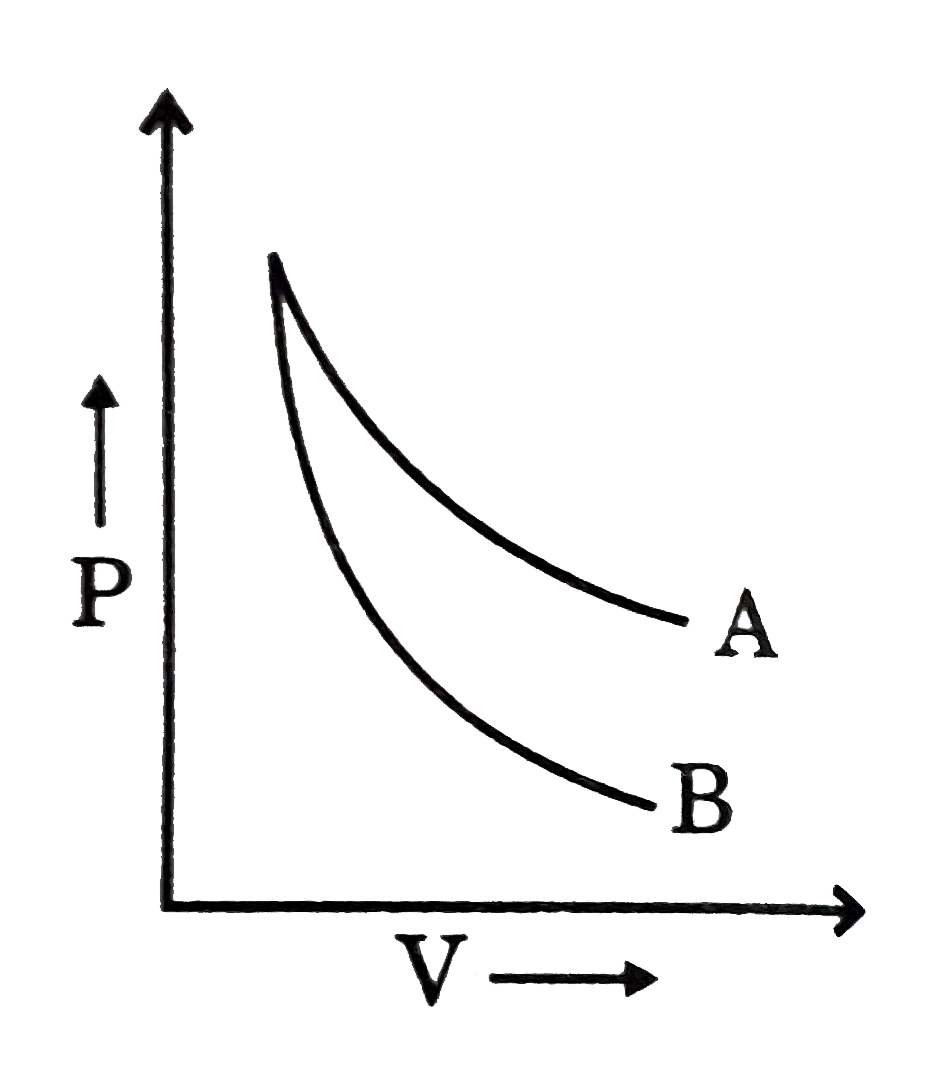
He and H2
H2 and He
He and Ne
H2 and Cl2
The correct Answer is:B
For adiabatic reversible process,
PVλ=R⇒P2=P1(V1V2)y(asV2>V1)
∴ So final pressure will be more for diatomic gas (less y)
Similar Questions
Knowledge Check
P−V plot for two gases ( assuming ideal ) during adiabatic processes are given in the fig.
Plot A and B should correspond respectively to :
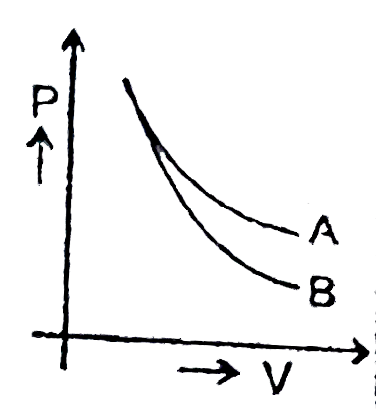 AHe and H2BH2 and HeCHe and NeDH2 and Cl2
AHe and H2BH2 and HeCHe and NeDH2 and Cl2P-V plots for two gases during an adiabatic process are given in the figure:
Plot A and plot B should correspond to : (Assume ideal behaviour)
 AHe and O2BSO2andArCO2 and HeDBoth (A) and (B)
AHe and O2BSO2andArCO2 and HeDBoth (A) and (B)P-V plots for two gases during adiabatic processes are shown in the figure. Plots 1 and 2 should corresponds respectively to
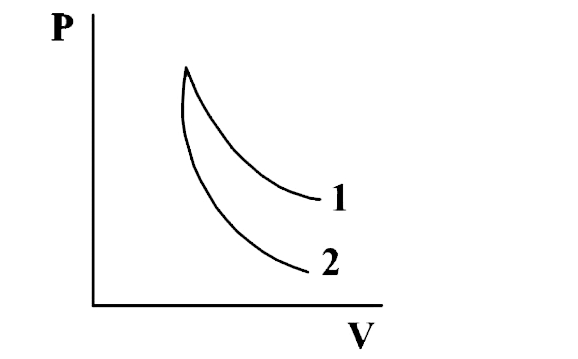 AHeandO2BO2andHeCHeandArDO2andN2
AHeandO2BO2andHeCHeandArDO2andN2
P−V plots for two gases during P4 adiabatic process are shown in the figure. Plots 1 and 2 should correspond respectively to
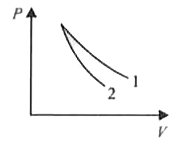
View SolutionP-V plots for two gases during adiabatic processes are shown in the figure. Plots 1 and 2 should corresponds respectively to

View SolutionThe pressure-volume of varies thermodynamic process is shown in graphs:
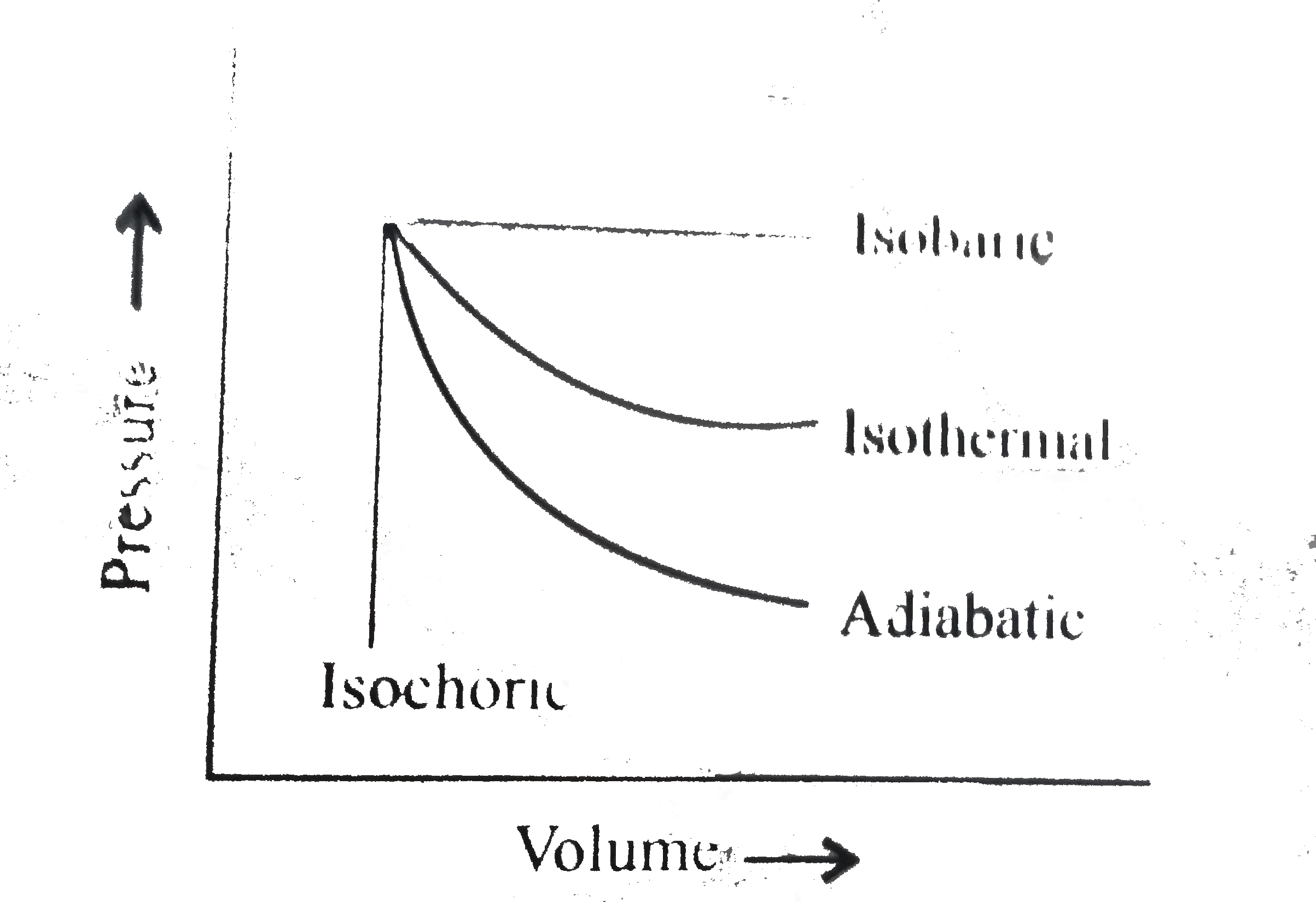
Work is the mole of transference of energy. It has been observed that reversible work done by the system is the maximum obtainable work.
wrev>wirr
The works of isothermal and adiabatic processes are different from each other.
wisothermal reversible=2.303nRTlog10(V2V1)
=2.303nRTlog10(P2P1)
wadiabatic reversible=CV(T1−T2)
P−V plots for two gases during adiabatic processes are given in the given figure:
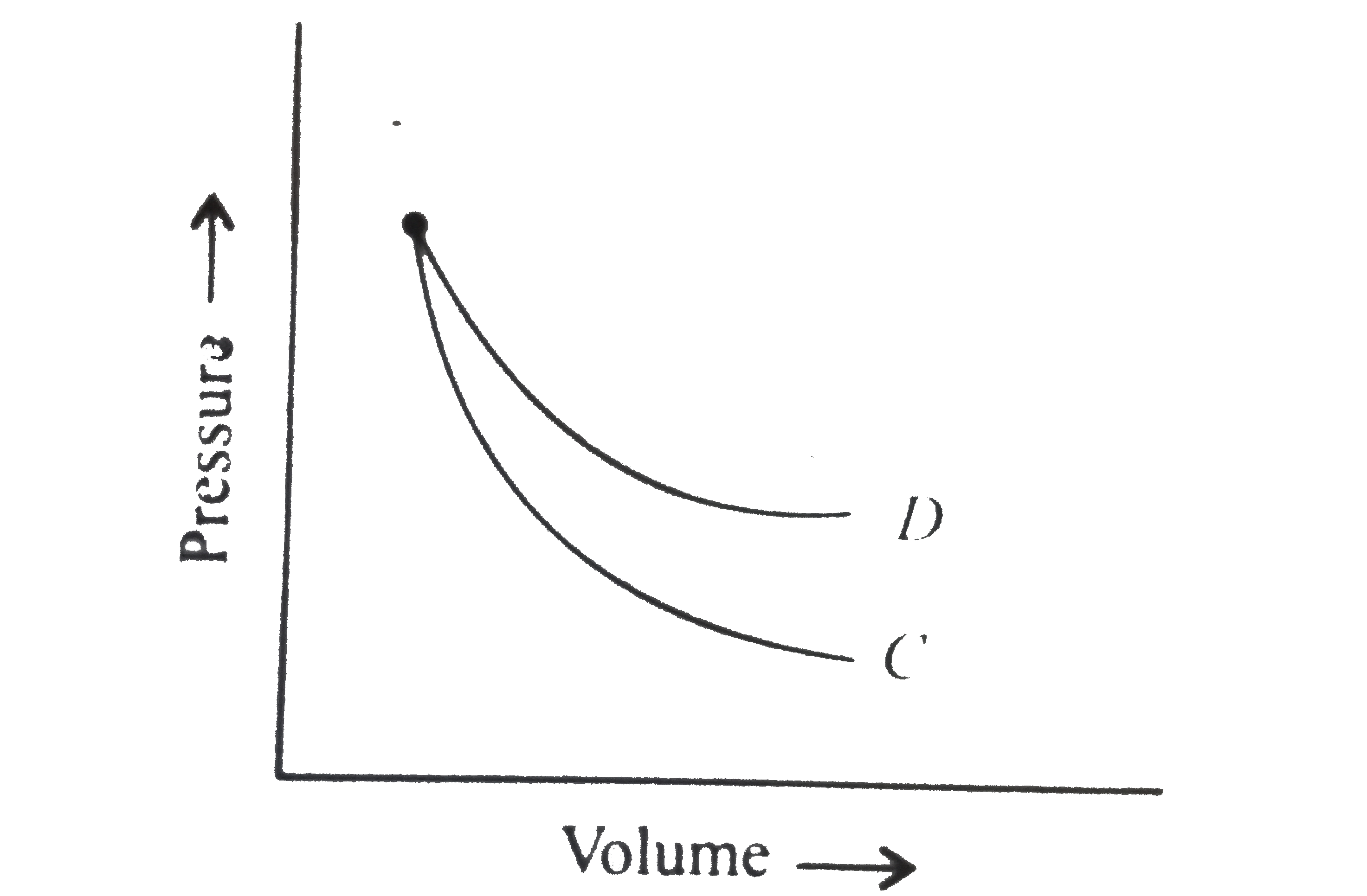
Plot D and Plot C should correspond to
View SolutionP−V plots for two gases during adiabatic expansion are shown in figure. Plot I and II should correspond respectively to :
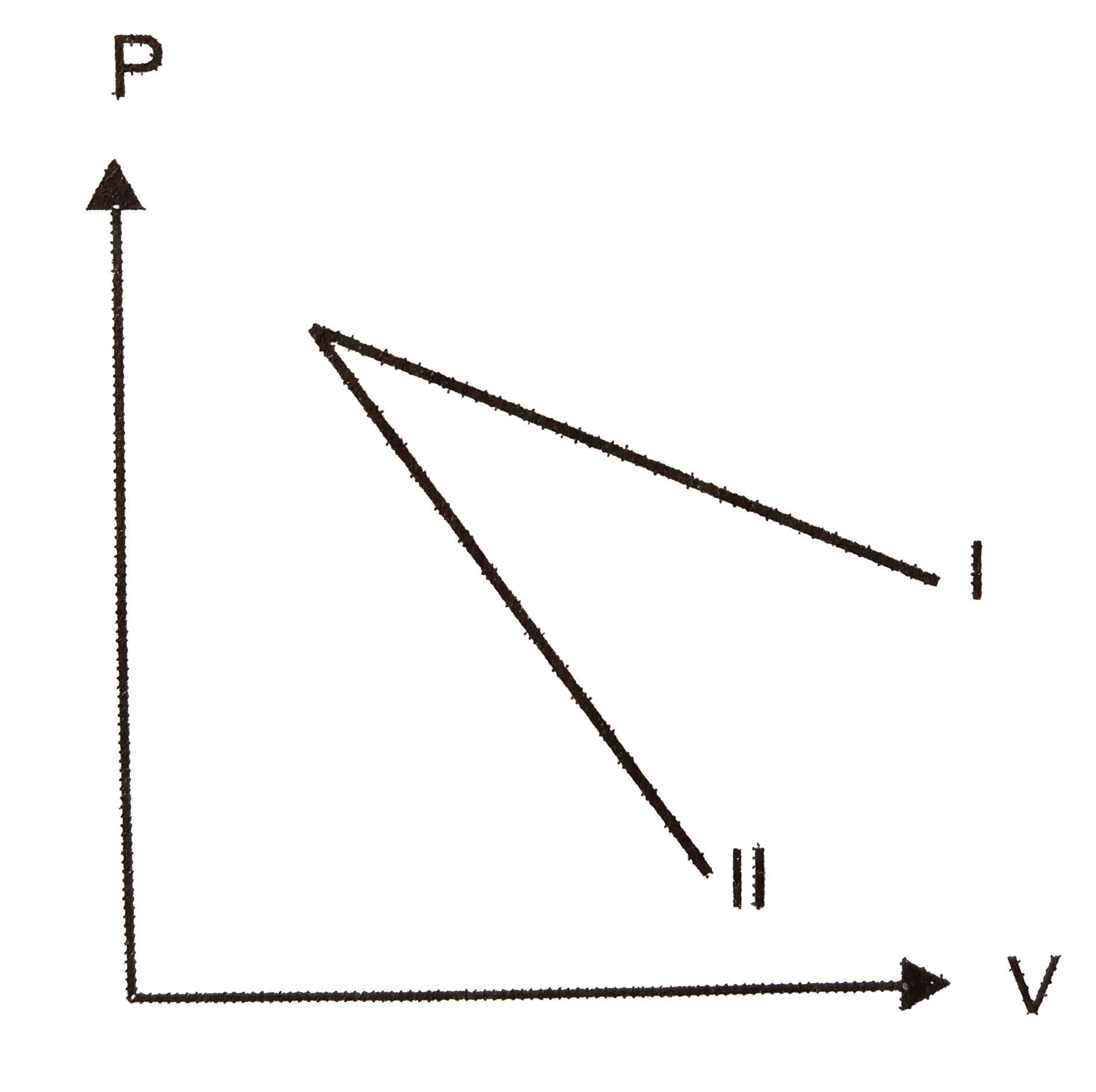
View SolutionP−V plots for two gases during adiabatic expansion are shown in figure. Plot I and II should correspond respectively to :

View Solution

